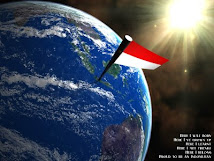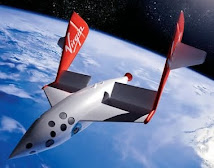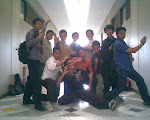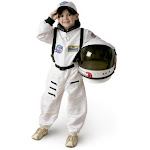Aeronautics and Astronautics Engineering
Arip Nurahman
Department of Physics
Faculty of Sciences and Mathematics, Indonesia University of Education
and
Follower Open Course Ware at Massachusetts Institute of Technology
Cambridge, USA
Department of Physics
http://web.mit.edu/physics/
http://ocw.mit.edu/OcwWeb/Physics/index.htm
&
Aeronautics and Astronautics Engineering
http://web.mit.edu/aeroastro/www/
http://ocw.mit.edu/OcwWeb/Aeronautics-and-Astronautics/index.htm
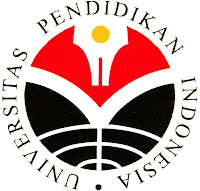

Focuses on real-time, safety-critical systems with humans-in-the-loop. Core disciplines include autonomy, software, communications, networks, controls, and human-machine and human-software interaction.
Explores the central processes in the creation, implementation, and operation of complex socio-technical engineering systems. Core disciplines include system architecture and engineering, simulation and modeling, safety and risk management, policy, economics, and organizational behavior.
Addresses the engineering of air and space vehicles, their propulsion systems, and their subsystems. Core disciplines include fluid and solid mechanics, thermodynamics, acoustics, combustion, controls, computation, design, and simulation.
Department of Aeronautics and Astronautics links
http://web.mit.edu/aeroastro/www/
http://ocw.mit.edu/OcwWeb/web/resources/curriculum/index.htm#16
http://engineering.mit.edu/
Lebih Fokus lagi.
1. Introduction to Aerospace Engineering and Design
- Course Home
- Syllabus
- Calendar
- Readings
- Labs
- Assignments
- Projects
- Related Resources
- Download Course Materia
Syllabus
Dava Newman. Interactive Aerospace Engineering and Design. McGraw-Hill, 2002.
Class Participation
Your questions and comments are extremely valuable. Since the lecture material is available ahead of time from the textbook and on the Web, there will be more time in lecture to discuss (in seminar style) the material rather than spending the entire 90 minutes copying the lecture notes from a blackboard. Discussions during class time are highly encouraged to fill gaps in the lecture material, to guide the pace of the class, and for you to enquire about the meaning, relevance, and importance of lecture material.
Portfolio
Students are required to compile a portfolio containing notes, brainstorming ideas, concepts, sketches and final designs. This comprehensive notebook, or Personal Design Portfolio (PDP), is due toward the end of the term (See syllabus). A recommended template is provided for developing your PDP (See CD-ROM). The intent is to promote good note taking habits as an aid to understanding the material, to put your creativity down on paper and the computer, to help me assess what you are picking up in the lectures, and to grade your individual contributions to your design teams. In sum, the PDP presents a concise snapshot of what you learn throughout the entire semester and emphasizes your individual contributions.
Problem Sets
All assignments are given on the syllabus homepage. Homework assignments include traditional problems, thought problems, design problems and Web-based presentations (Preliminary Design Review (PDR), and Critical Design Review (CDR).
Lighter-than-Air (LTA) Vehicle Design Project
Teams of 5-6 students each would design, build, and race a remote controlled, lighter-than-air vehicle. The teams compete in their ability to carry the largest payload around a specified course in the minimum amount of time. The designs are judged on their equivalent mass/time. LTA vehicles are also judged in the categories of most reliable and most aesthetic designs. All designs are constrained to have a gross mass of less than 1.75 kg. A project kit is provided consisting of radio control equipment, batteries, balloons, electric motors, and construction materials.
- Problem Sets and Reading Summaries 30%
- Student Personal Design Portfolio 15%
- LTA Design Project 45% (including PDR, CDR, Trials and Race)
- Attendance, Participation, General Evaluation 10%
A Note on Submission of Work
The manner in which you present your work can be just as important (and in some cases more so) than the final answer. Be sure to delineate each step along the way. Show a clear and logical approach to your solution. That makes your problem sets a better reference to you and easier for us to give you partial credit (if so deserving).
2. Unified Engineering I, II, III, & IV
Syllabus
Summary
Logistics
Learning Objectives
| DISCIPLINES | ABBREVIATIONS | LEARNING OBJECTIVES |
|---|---|---|
| Computers and Programming | C | 16.01-02, Fall (PDF) |
| Fluid Mechanics | F | 16.01-04, Fall-Spring (PDF) |
| Materials and Structures | M | 16.01-04, Fall-Spring (PDF) |
| Signals and Systems | S | 16.01-02, Fall (PDF) 16.03-04, Spring (PDF) |
| Systems and Labs | S/L | 16.01-02, Fall (PDF) |
| Thermodynamics Propulsion | T P | 16.01-02, Fall (PDF) 16.03-04, Spring (PDF) |
| Unified Concepts | U |

















